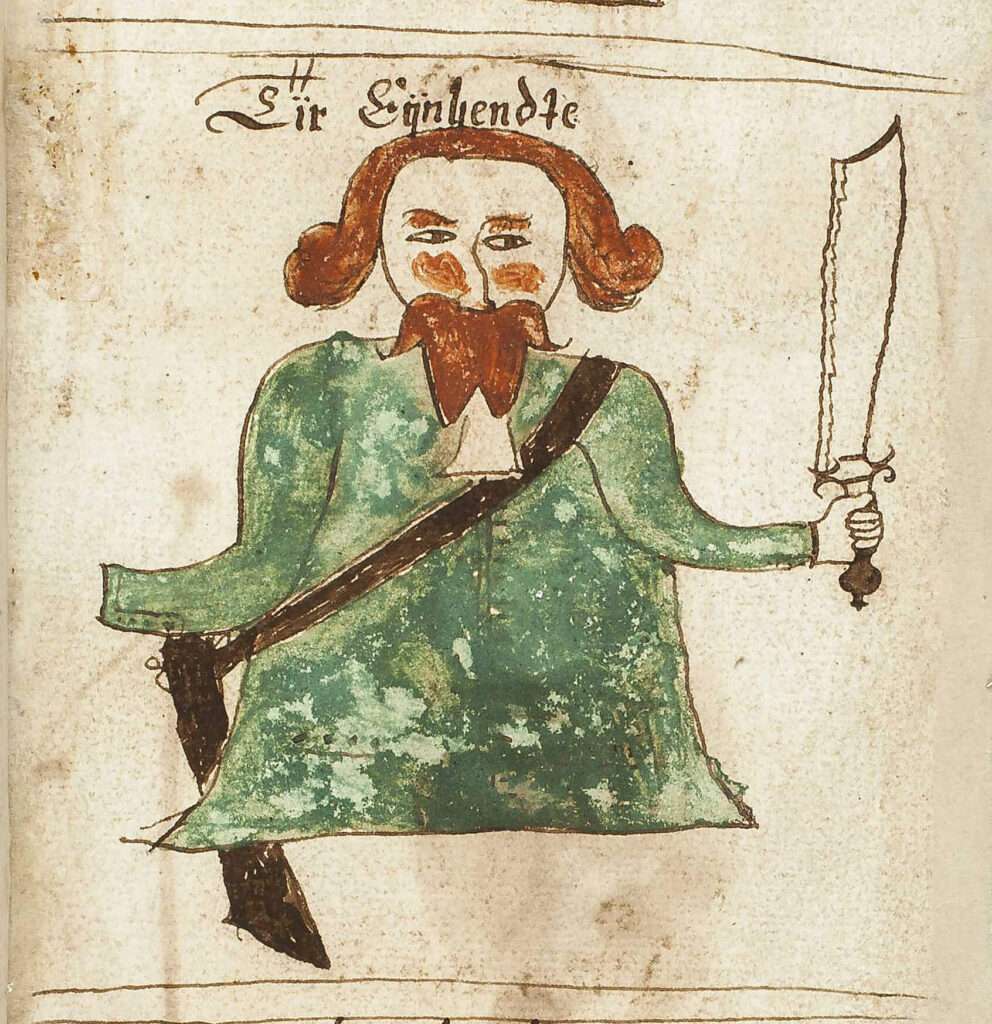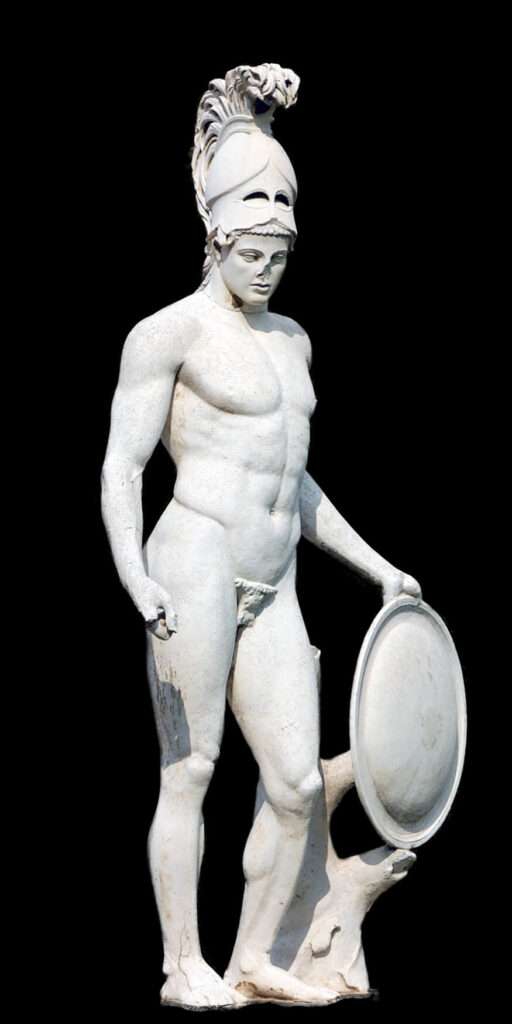Tyr, a figure shrouded in the ancient mists of Norse mythology, stands as a testament to the complex tapestry of Norse belief systems. Revered as the god of war, justice, and lawful order, Tyr’s role transcends the simplistic archetype of a mere war deity. His significance is deeply embedded in the Norse pantheon, often associated with heroic valor and the upholding of oaths—a cornerstone in a society where honor and word were paramount. Tyr’s presence in the mythological narrative, from the binding of the monstrous Fenrir to his symbolic one-handed sacrifice, offers a window into the values and societal norms of the Norse people. His stories, preserved in texts like the Poetic and Prose Edda, continue to captivate scholars and enthusiasts alike, providing a rich vein of cultural and historical insight into the ancient Norse world.
| Origin | Norse Mythology |
| Deity Type | God of Law and Courage |
| Appearance | Often depicted as a brave and heroic figure |
| Role | God of law, justice, and courage; known for his bravery in facing the monstrous wolf Fenrir |
| Sacrifice | Sacrificed his hand to Fenrir to bind the wolf and protect the gods |
| Symbolism | Symbolizes honor, righteousness, and the pursuit of justice |
| Cultural Impact | Revered as a symbol of valor and the upholding of oaths in Norse society |
| Depictions | Featured in several Norse myths and sagas, particularly those involving Fenrir |
1. Historical Context of Tyr in Norse Mythology
Origins of Tyr in Ancient Texts
The origins of Tyr are deeply rooted in ancient Norse literature, primarily the Poetic Edda and Prose Edda. These texts, compiled in the 13th century but based on much older oral traditions, provide the earliest and most detailed descriptions of Tyr. In the Poetic Edda, Tyr’s role is somewhat enigmatic, yet he is unmistakably portrayed as a god of war. The Prose Edda offers a more elaborate depiction, presenting Tyr as a brave and honorable figure, crucial in the Norse pantheon. Notably, in these texts, Tyr is often associated with law and justice, embodying the principles of fairness and order in a society that valued such qualities. His presence in these ancient texts underscores his significance and the reverence with which he was held in Norse culture.

Evolution of Tyr’s Depiction Over Time
The depiction of Tyr has evolved significantly over time, as evidenced by historical texts and archaeological findings. Initially revered as a sky god and one of the principal deities in Germanic paganism, Tyr’s importance seemed to diminish with the rise of Odin’s cult. This shift is reflected in the changing narratives and iconography associated with Tyr. Archaeological findings, such as depictions on rune stones and other Norse artifacts, indicate a gradual transition in Tyr’s role and symbolism. From a prominent war god to a more complex figure embodying justice and the rule of law, Tyr’s evolution mirrors the shifting dynamics and complexities of Norse society. This evolution not only highlights the fluid nature of mythological narratives but also provides insights into the changing societal values and religious practices of the Norse people over time.

2. The Mythology and Stories of Tyr
Key Myths Involving Tyr
Tyr’s mythology is rich with tales of bravery and sacrifice, most notably in the binding of Fenrir, as recounted in the Prose Edda. Fenrir, a monstrous wolf destined to wreak havoc, was only successfully bound by the gods due to Tyr’s courage. The gods, fearing Fenrir’s growing strength, decided to bind him with a magical ribbon, Gleipnir. Fenrir, suspicious of their intentions, agreed to be bound only if one of the gods placed their hand in his mouth as a pledge of good faith. Tyr, knowing the potential consequence, willingly placed his hand in Fenrir’s jaws. When Fenrir realized he was tricked, he bit off Tyr’s hand, leading to Tyr’s most defining characteristic: his one-handedness. This act not only exemplifies Tyr’s bravery but also his commitment to the greater good and the upholding of order, even at personal cost.

Interpretation of Tyr’s Role and Symbolism
Experts in Norse mythology often interpret Tyr’s role as multifaceted, transcending the archetype of a typical war deity. His sacrifice in the binding of Fenrir symbolizes the Norse values of honor and the willingness to make personal sacrifices for the welfare of the community. Tyr’s one-handedness becomes a symbol of justice, sacrifice, and the enforcement of contracts, reflecting his association with law and order. Comparative analysis with other mythological figures, such as the Roman god Mars or the Greek god Ares, reveals distinct differences. Unlike Mars and Ares, who primarily represent the physical and violent aspects of war, Tyr’s characterization is more aligned with the maintenance of societal balance and justice. This comparative perspective highlights the unique place Tyr holds in Norse mythology, embodying a complex blend of warrior ethos and judicial fairness.
3. Tyr’s Attributes and Symbolism
Physical and Character Traits of Tyr
Tyr, as depicted in both literary sources and archaeological findings, possesses distinct physical and character traits that set him apart in Norse mythology. Physically, Tyr is often described as a strong and imposing figure, befitting a god of war. He is typically depicted with one hand, a direct result of his legendary sacrifice during the binding of Fenrir. This characteristic not only serves as a reminder of his unwavering commitment but also symbolizes his resilience in the face of adversity. Character-wise, Tyr is renowned for his unwavering courage, an attribute that shines in his pivotal role during the binding of Fenrir. His character is further defined by a strong sense of justice and honor, making him a symbol of moral integrity in Norse mythology.

Symbols and Objects Associated with Tyr
Tyr’s symbolism is not limited to his physical form but extends to various objects and symbols found in historical artifacts. One of the most recognizable symbols associated with Tyr is the rune Tiwaz, which is named after him. This rune represents order, honor, and righteous authority, echoing Tyr’s role as a god of justice and lawful conduct. Additionally, Tyr is often depicted holding a spear or sword, emphasizing his martial prowess and his willingness to engage in combat to maintain peace and order. Historical artifacts, such as amulets and runestones, featuring these symbols and depictions, offer insights into the reverence with which Tyr was regarded by the Norse people. The combination of these physical attributes and symbols underscores Tyr’s multifaceted significance in Norse mythology, as a warrior, a symbol of justice, and a guardian of oaths.
4. Comparative Analysis with Other Mythologies
Tyr’s Counterparts in Other Mythologies
While Norse mythology stands as a distinct and rich tradition, it’s intriguing to explore the counterparts of Tyr in other mythologies. One such counterpart can be found in Roman mythology, where the god Mars bears some resemblance to Tyr. Mars, like Tyr, is associated with war and combat. Both deities are characterized by valor and martial prowess. However, Mars is primarily a god of warfare, emphasizing the physical aspects of battle, while Tyr’s role extends to the realms of justice and order.
In Greek mythology, the closest parallel to Tyr is Ares, the god of war. Ares shares similarities with Tyr in terms of their martial aspects, but Ares is often depicted as impulsive and driven by a love for conflict, while Tyr embodies a more balanced and honorable approach to warfare. These comparisons shed light on the distinctiveness of Tyr’s character within Norse mythology, where he balances the roles of warrior and upholder of moral values.

Shared Themes and Differing Interpretations
Exploring shared themes and differing interpretations between Tyr and his counterparts offers insights into cross-cultural influences. Common themes among these war deities include courage, valor, and the protection of their respective pantheons. However, Tyr stands out for his strong association with justice and oaths, a unique aspect in Norse mythology. This suggests that while war is a universal theme in mythology, each culture interprets and emphasizes it differently.
Furthermore, Tyr’s evolution over time, from a prominent sky god to a deity of law and order, showcases the fluid nature of mythological narratives and reflects the changing values and societal needs of the Norse people. This evolution is not only an intriguing aspect of Tyr’s character but also a testament to the adaptability of mythology in reflecting cultural shifts. Comparing these interpretations offers a deeper appreciation for Tyr’s complexity and significance in Norse mythology.
5. Tyr’s Influence on Modern Culture
Tyr in Contemporary Literature and Media
Tyr’s enduring legacy extends beyond the annals of ancient mythology, leaving a notable imprint on contemporary literature and media. In recent years, authors and filmmakers have drawn inspiration from Norse mythology, reimagining Tyr’s character in various forms. Notable examples include his portrayal in Neil Gaiman’s “American Gods,” where Tyr stands as a prominent deity navigating a modern world of belief and disbelief. Additionally, Tyr has made appearances in popular video games like “God of War,” showcasing his enduring appeal as a symbol of valor and honor. These contemporary interpretations breathe new life into Tyr’s character, illustrating his continued relevance and influence in modern storytelling.

Tyr’s Role in Modern Spiritual Practices
In the realm of modern spiritual practices, Tyr’s presence remains palpable for those who follow Norse paganism and Heathenry. Interviews with practitioners reveal the significance of Tyr as a god of justice and oaths. Contemporary followers often invoke Tyr’s name when seeking guidance in matters of morality, ethics, and keeping their word. Quotes from these practitioners shed light on Tyr’s role as a source of inspiration and a moral compass in a world that sometimes seems adrift. His continued veneration reflects the enduring appeal of his values and principles in guiding individuals along paths of honor and integrity.
6. Conclusion
In Norse mythology, Tyr holds enduring significance, embodying timeless virtues. As the god of war, justice, and order, his role is pivotal. Tyr’s sacrifice, losing his hand to bind Fenrir, symbolizes his unwavering commitment to upholding oaths and societal balance. In Norse culture, he represents honor and integrity, guiding the people through their world’s complexities. Today, Tyr’s legacy persists in ancient texts, artifacts, contemporary literature, and modern Norse pagan practices. His enduring influence reminds us of valor, justice, and unwavering pursuit of what’s right, making Tyr a revered Norse deity with ongoing relevance in our world.
